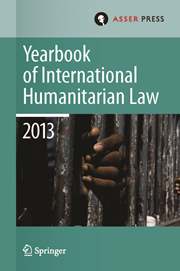Article contents
PROTECT RESPONSIBLY: THE AFRICAN UNION'S IMPLEMENTATION OF ARTICLE 4(H) INTERVENTION
Published online by Cambridge University Press: 02 February 2010
Abstract
The concept of ‘the responsibility to protect’ (R2P) was endorsed at the 2005 World Summit by the UN General Assembly. This concept, like the right to intervene under Article 4(h) of the Constitutive Act of the African Union, aims to end mass atrocity crimes in the form of war crimes, genocide and crimes against humanity. Yet the question that remains is: what if the UN Security Council is unwilling or unable to act? Further, there is a continuing unanswered question: ‘should action to prevent large-scale killing in an African country be beholden to a Security Council that has no permanent African membership?’ The High-level Panel indicated that in some urgent situations UN Security Council authorization may be sought after operations have commenced, whereas the World Summit Outcome rejected demands that states or organizations such as the African Union (AU) should be able to act before gaining UN authorization. These are the principal issues addressed in this analysis, which discusses how the AU can implement the right to intervene under Article 4(h) against the background of the prohibition of the use of force regime under the UN Charter. The analysis explores the current thinking of the AU and the international community on the key question of how to proceed in cases where the UN Security Council is deadlocked in using force to prevent mass atrocity crimes. The discussion highlights the intention of the framers of the AU Act vis-à-vis the practice of the Security Council in authorizing enforcement action as well as views of various commentators in this regard.
Keywords
- Type
- Articles
- Information
- Copyright
- Copyright © T.M.C. Asser Instituut and the Authors 2008
- 1
- Cited by


